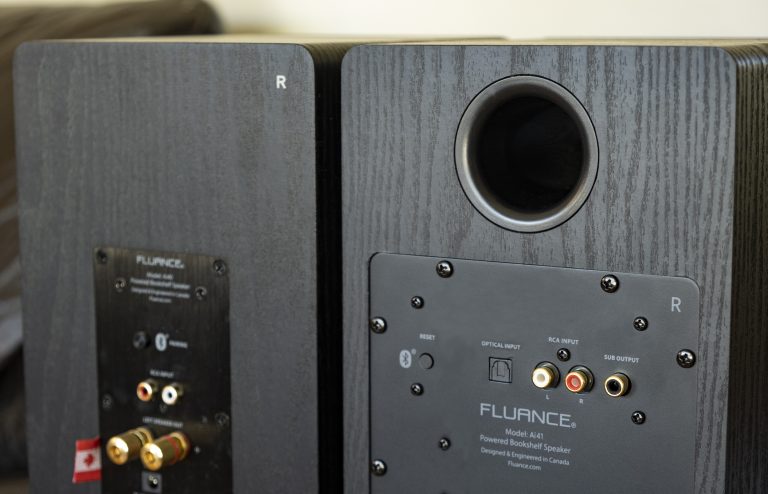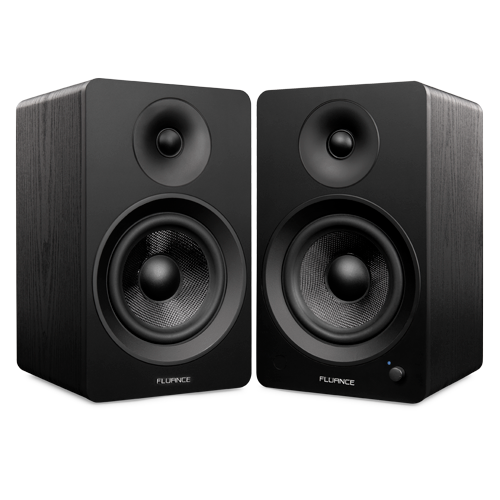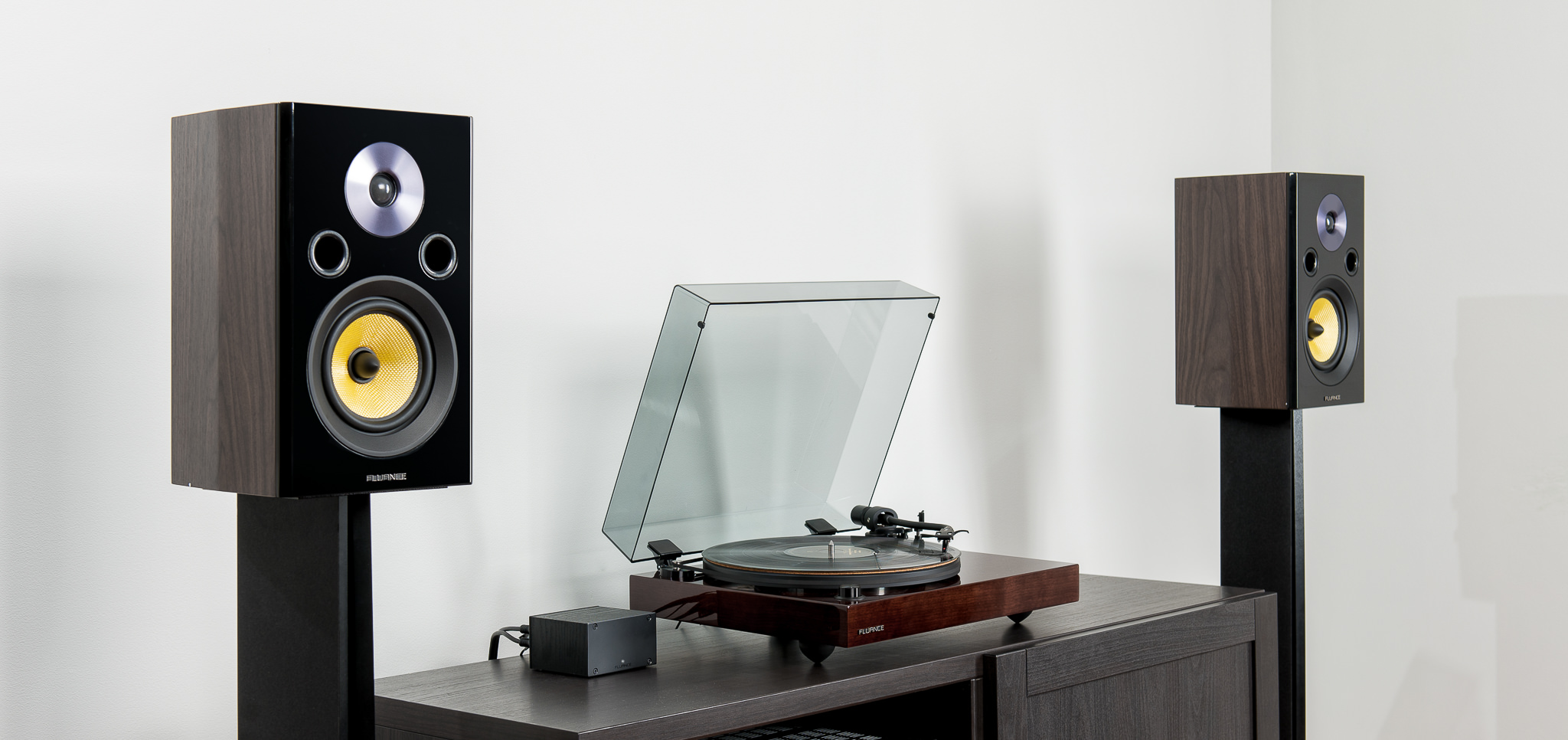Ported speaker cabinets vs sealed speaker cabinets is a consideration for many audio enthusiasts when choosing which speaker is best for their setup. There is no right or wrong answer, but the ultimate choice comes down to some personal sound preferences as well as the actual listening environment and setup a user will be working with.
In short, the answer is subjective because one speaker design is not superior to the other. There are pros and cons to both ported vs sealed that need to be considered when choosing the right speaker for your audio setup.
Contents
Ported vs Sealed Speaker Enclosure Designs

Sealed Speaker Cabinet
A sealed speaker cabinet has a fully enclosed box (no openings), allowing only the speakers to emit sound. The back energy from the air pressure is trapped within the box and dissipated as heat, working as a shock absorber that modulates the driver’s back and forth motion. Sealed speaker cabinets are smaller in overall size, in turn requiring more power to get the woofers to move and process low-frequencies.
Ported Speaker Cabinet
A ported speaker cabinet has a hole (or holes) in the speaker box fitted with a tube tuned to equalize pressure between the inside and outside of the speaker. As the drivers move back and forth, air pressure is relieved and funneled through the port opening, allowing air waves to travel freely and no longer act as a shock absorber. The larger overall size and increased freedom of air flow permits lower frequencies to travel without much amp power, resulting in a deep, boomy bass.
It’s All About the Bass
When it comes to debating which cabinet design produces the best bass tones, this is where diehard audio enthusiasts put on their boxing gloves. Each will defend their preference, but the debate is like comparing a fork with a spoon; both have their benefits and limitations.
Unlike mid and high-range frequencies, bass frequencies are omnidirectional. The room boundaries and positioning of your speaker will affect how bassy your speakers sound. In addition to placement, the style of bass you prefer depends on the listening experience you expect to achieve.
If you are looking for a “boomy” audio experience, ported speakers will deliver a louder, natural, more efficient bass. Simply put, ported speakers are equipped to deliver a thunderous, gut-punching, floor-trembling audio experience with greater dynamic output at the lowest frequencies. The slower transient response causes bass to roll off quicker and deeper when the woofer isn’t moving as much. If you like to crank volume levels high enough to vibrate and rattle your surroundings, ported speakers are for you.
In contrast, a sealed speaker has a tighter, more articulate bass that requires more amp power. Bass playback is crisp, accurate and even, eliminating the roaring you’d experience from a ported speaker. Sealed speakers have a faster transient response, allowing the bass to roll off more gradually with no overhang. To create an enhanced natural bass tone from the sealed speaker, an audio engineer is more likely to use digital signal processing (DSP) to enhance the low frequency passage.
So Which Is Best?
The end goal of your speaker is to experience audio that suits your personal taste and long-term goals for your speaker system. If possible, we suggest listening to each speaker type in a side-by-side comparison and let your ears be the judge.
Other factors you need to consider when selecting speakers are:
- Room size
- Wall surface
- Format (i.e., home theater, music room)
Room Size:
If you have a large room, ported speakers are the optimal choice to achieve a louder bass with less amplification. The higher output capability in a deeper octave (20-40 Hz) will “fill the room” with sound, especially where less “room gain” is present. Being more compact, sealed speaker cabinets are best suited for a small to mid-size room or office.
Wall Surface:
Tile, metal, and stone reflect sound, whereas rooms with rugs, drapes, or sound baffles (as in home theaters) absorb sound. All of these come into play when deciding which speakers are ideal for your setting. We all know what it’s like attending a concert in a hockey rink (boomy bass, reverberation for days) versus one in an acoustically designed theater.
Format:
Are you shopping for speakers for your office at work? Planning a top-tier music room? Perhaps designing a home theater?
Both sealed and ported speaker cabinets benefit each of the above. Even though your decision will come down to personal taste, there are recurring qualities that audio enthusiasts mention to complement each speaker cabinet type. Ported speaker cabinets seem to be the top choice for home theater setups. It needs less power and recreates thunderous explosions and sound effects that reproduce the experience of being at the movie theater. Ported speakers are claimed to be a good choice for action and sci-fi films, in addition to rap, electronic and dance music, due to its subsonic tones.
Conversely, if you design a system to enjoy soft rock, pop and country music, then many prefer the sealed speaker cabinet for the taut bass frequencies that sound more musical. Sealed speakers can be excellent for a small home theater room or office space.
We hope this has given you a better understanding of the benefits and drawbacks of each speaker cabinet design. In the end, both ported and sealed speakers have strengths and limitations that need to be taken into consideration when choosing the right speakers for your audio experience. When contemplating which design will fit your audio needs, consider your intended listening preferences and room specifications in your choice. In the end it comes to what your ears love, heed their advice!
You can view our selection of home audio and speaker systems at www.fluance.com
Level-up any sound system in your home by easily pairing to your turntable, TV, computer, or Bluetooth speakers to experience an unparalleled sound performance.
Fluance Ai61 Powered Stereo Bookshelf Speakers
